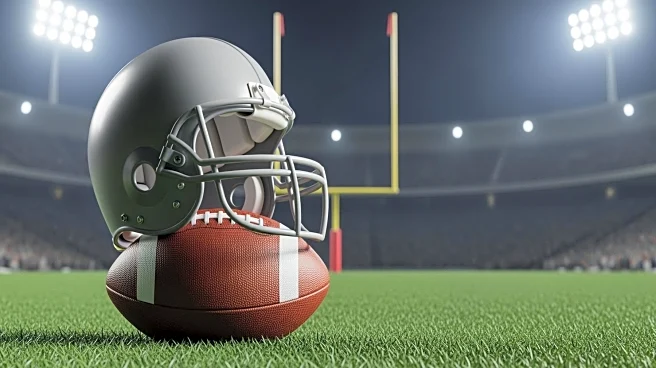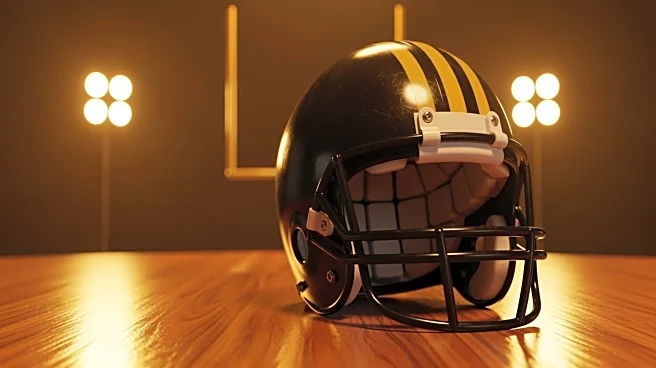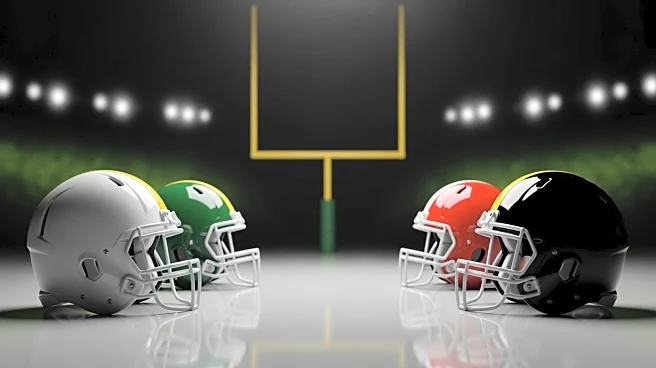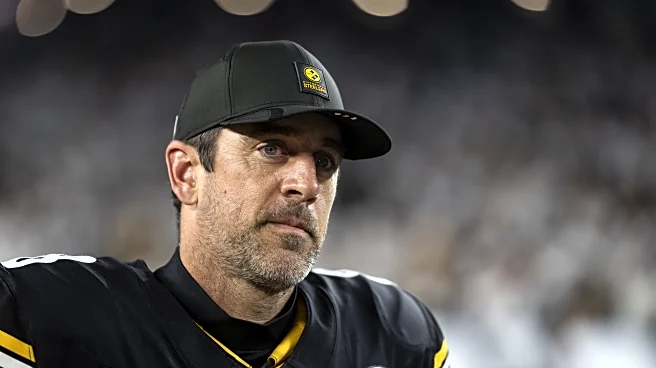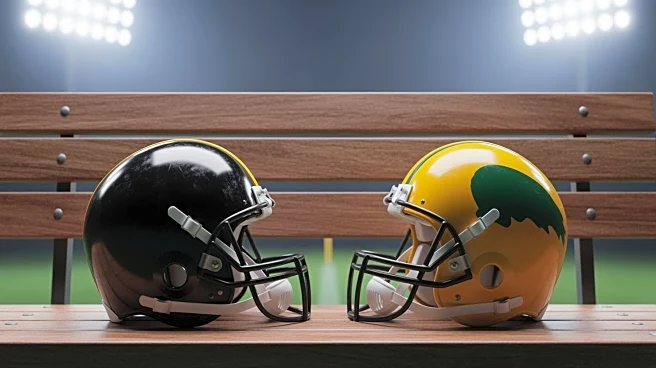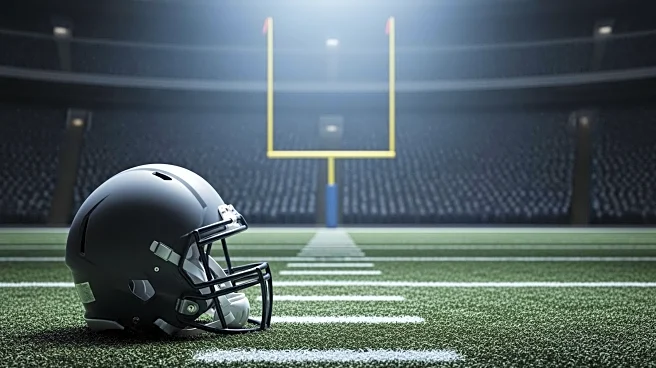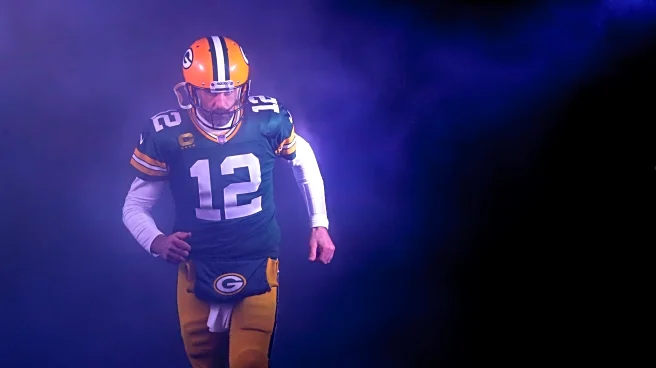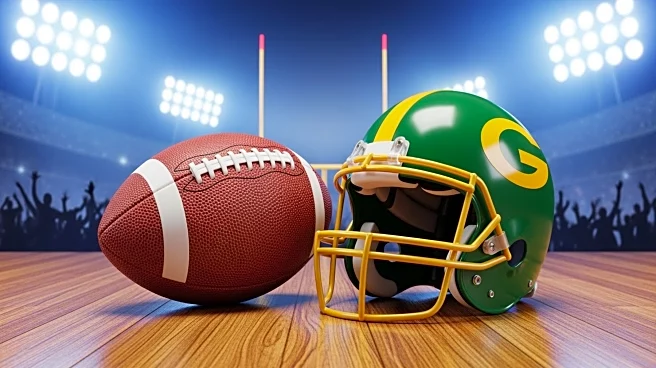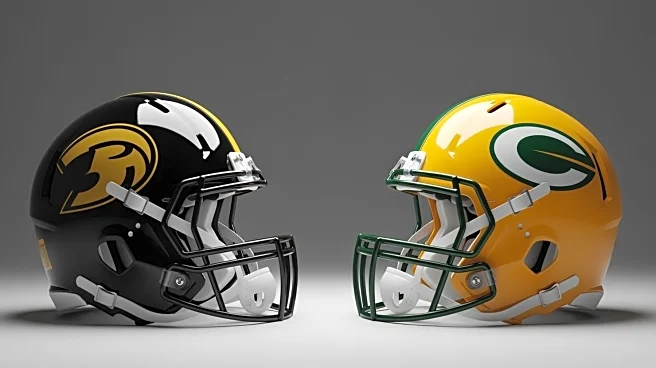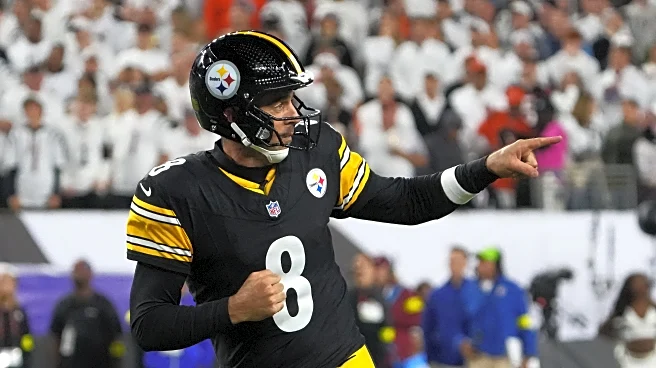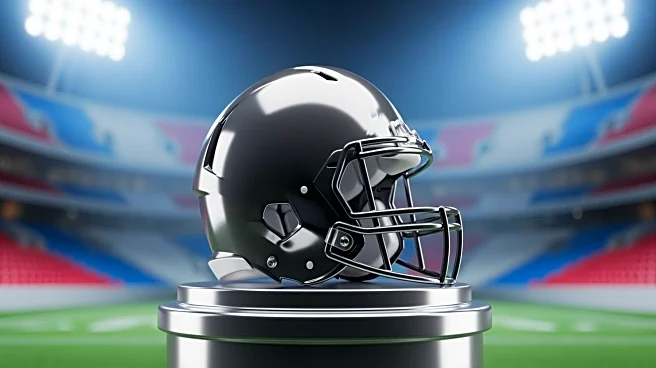What's Happening?
The Pittsburgh Steelers are set to debut their 1933 throwback uniforms during their Week 8 matchup against the Green Bay Packers on 'Sunday Night Football.' The uniforms feature matte gold helmets with
a single black stripe, gray masks, and jerseys inspired by the 1930s and 1960s designs. The jerseys are gold with black vertical lines, and include the Pittsburgh city crest on the chest. Beige pants are worn to honor the 1933 khaki uniform. Players and fans have expressed excitement over the new look, with tight end Pat Freiermuth and defender Alex Highsmith praising the design. The Steelers have a strong record in throwback uniforms, having won 16 out of 21 games when wearing them.
Why It's Important?
The introduction of the throwback uniforms is significant as it pays homage to the Steelers' historical roots, connecting the current team with its founding year. This move is likely to enhance fan engagement and nostalgia, potentially boosting merchandise sales and team spirit. The uniforms also serve as a marketing tool, drawing attention during a high-profile game against the Packers. The Steelers' decision to wear these uniforms reflects a broader trend in sports where teams leverage historical designs to strengthen brand identity and fan loyalty.
What's Next?
The Steelers will showcase these uniforms during their game against the Packers, which is expected to draw significant viewership. The outcome of the game could influence the team's decision to continue using throwback uniforms in future matches. Additionally, fan reactions and merchandise sales will likely be monitored to assess the success of this initiative. The Steelers' performance in these uniforms could also impact their standing in the AFC North, especially given the recent loss by the Cincinnati Bengals.
Beyond the Headlines
The use of throwback uniforms raises questions about the balance between tradition and modernity in sports branding. While these uniforms celebrate the team's history, they also highlight the evolving nature of sports aesthetics and the role of nostalgia in fan engagement. The decision to wear these uniforms may also influence other teams to explore similar initiatives, potentially leading to a broader trend of historical uniform revivals in the NFL.
